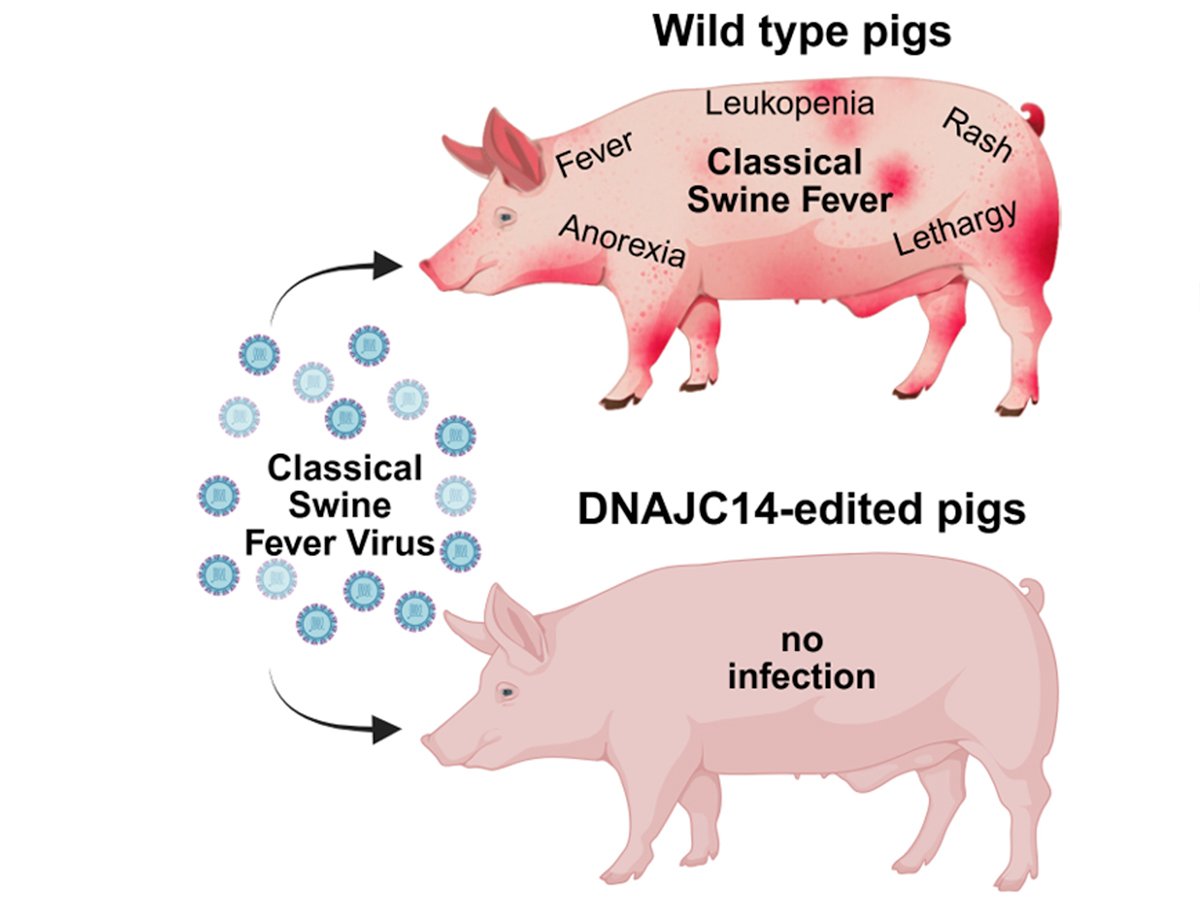By almost any measure, 2001 was a good financial year on the farm, says
the federal government.
A sharp increase in program payments, coupled with strong livestock
prices and sales, drove realized net income (receipts minus costs and
depreciation) up 59 percent in 2001 to $4.68 billion across Canada,
according to Statistics Canada.
In Saskatchewan, the increase was more than 300 percent to $964 million.
Saskatchewan agriculture minister Clay Serby said in a Nov. 29
interview last year’s stronger bottom line should be the norm, and not
Read Also

Gene edited pig resistant to classical swine fever
British scientists have discovered a gene edit that could provide resistance to classical swine fever in pigs and Bovine Viral Diarrhea in cattle
the exception.
“We should be around the billion dollar mark annually,” he said. “And
we’re trying in our province to capture a larger share from the
marketplace than we do from programs. But last year, there’s no doubt
that programs saved us.”
In fact, program payments pumped just over $1 billion into Saskatchewan
last year, almost $60 million more than total realized farm income.
Across the country, program payments last year increased to $3.75
billion from $2.82 billion the previous year.
A $1.5 billion increase in livestock receipts more than offset a half
billion-dollar drop in crop receipts last year.
“There’s no doubt last year was very rosy for cow-calf operators,”
Canadian Cattlemen’s Association president Neil Jahnke said. “It was an
extremely good year, although not for feedlot guys.”
This year is shaping up differently.
The federal government agency reported last week that because of the
prairie drought and lower program payments, farm cash receipts have
dropped in most provinces and most sharply in Saskatchewan and Alberta,
where the drought has been a factor.
Wheat, barley and canola receipts all were down more than 15 percent
during the first nine months of 2002, to the end of September.
Livestock receipts were down 5.8 percent, despite increased forced
sales because of lack of feed.
Meanwhile, total program payments are down more than 20 percent during
those nine months, even as crop insurance payouts soared 88 percent
above last year’s level to $803 million.
Statistics Canada analysts said it was a record crop insurance payout,
more than triple the five-year average. It was because of both drought
and an increase in insured acres.
The federal agency said the decrease in program payments was the first
drop since 1997.
Canadian Federation of Agriculture president Bob Friesen says the
federal income numbers run the risk of giving Canadians a false
impression of conditions down on the farm.
“These numbers mask some very difficult times in the grains sector
because livestock was good and do not accurately reflect how much
farmers have been disposing of their assets,” he said.
“Keep in mind the livestock numbers this year are inflated by forced
sales. So I’m concerned that a distorted picture of prosperity may be
presented here.”














